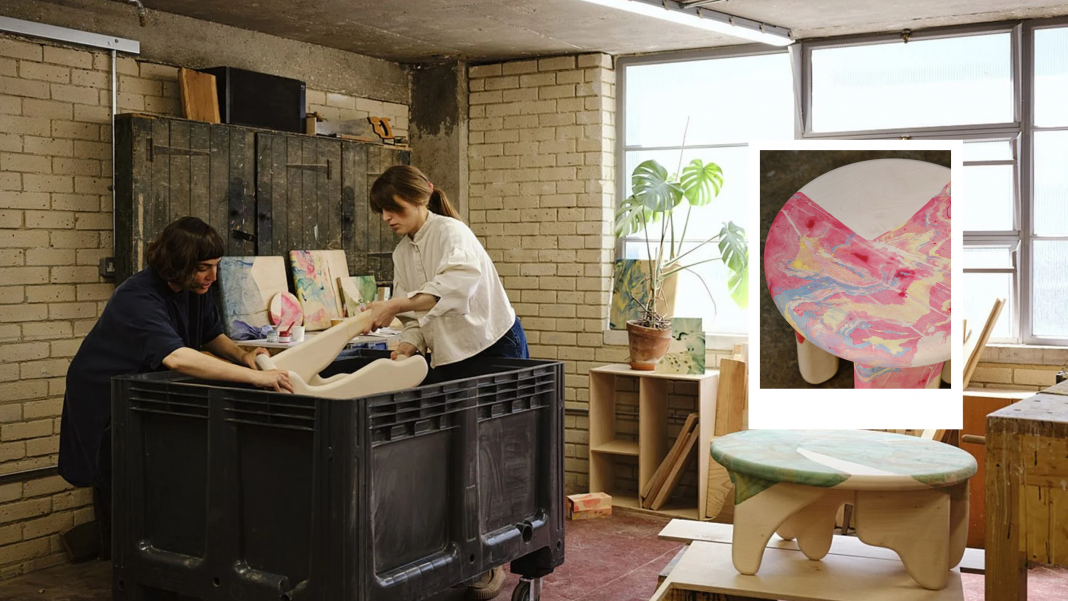Swedish furniture giant IKEA has launched a formal investigation into allegations of design plagiarism after industrial designer Jessica Signell accused the company of copying her 2005 creation, the Eve drinks table. The accusation, published in a leading Swedish newspaper, has ignited a conversation about design ethics, originality and corporate accountability within the global design community.
A 20-year-old design meets a modern controversy
Jessica Signell, a Swedish industrial designer with a long-established presence in the Scandinavian design scene, has publicly accused IKEA of producing a table with striking similarities to her original design. Her claims were first outlined in an opinion piece for Dagens Nyheter, one of Sweden’s major newspapers, where she stated that IKEA’s new table from its Stockholm 2025 collection appears to imitate her Eve table—designed two decades ago and recognized at international fairs and award ceremonies.
“My trolley Eve has a strong, unique typology,” Signell said. “Until now, there was no other trolley with two round trays with this difference in proportions between them, such high edges, and a single centered table leg.” Originally showcased at Milan Design Week in 2005 and relaunched by Norwegian brand LK Hjelle at the 2006 Stockholm Furniture Fair, the Eve table was also honored with an Elle Decoration design prize, further establishing its identity within contemporary Scandinavian design history.

IKEA’s new table raises red flags
The focus of the controversy is IKEA’s new table, part of the Stockholm 2025 collection. Crafted from oak veneer, the table shares visual and structural similarities to Signell’s Eve—most notably, its two vertically stacked trays supported by a single leg. The resemblance, Signell argues, goes beyond coincidence. In her article, she notes that this isn’t the first time IKEA has been called out for mimicking the work of independent designers, accusing the brand of sending mixed messages: “The company ‘celebrates Scandinavian design’ while at the same time conveying the message: “It’s okay to steal.”
What makes this case particularly sensitive is the long-standing relationship between IKEA and the Scandinavian design community. Signell herself claims to have been known to IKEA’s leadership for years, noting that the company’s former design manager—who recently stepped down—had interacted with her work online. “She has liked plenty of photos of my piece on social media,” Signell said. “I also received an award from Elle Decoration for it, at a ceremony sponsored by IKEA.”

IKEA’s response: A statement and an investigation
In response to the accusation, IKEA released a statement asserting that it “would never deliberately copy products from other companies or designers.” Arvid Stigland, speaking on behalf of the Inter IKEA Global Media Relations Team, emphasized the company’s commitment to originality and ethics. “Design is of greatest importance for IKEA and is an integral part of the IKEA vision and business idea,” he said. “The IKEA view is that it is never acceptable to copy another designer’s work.”

Despite the denial, IKEA has taken the claims seriously enough to trigger its standard internal review process. According to the company, whenever a question of potential plagiarism arises, a “thorough investigation” is launched to assess whether any violations have occurred. “We proactively work to prevent any resemblance, and our standard procedure is to launch a thorough investigation whenever questions arise,” said Stigland. “In this case, we have opened that investigation.”
While the outcome remains pending, the launch of the investigation suggests that the company is at least acknowledging the seriousness of the situation, particularly at a time when transparency and accountability are increasingly demanded by both consumers and the design industry at large.

A broader issue of intellectual property in design
This case has tapped into a wider, long-standing issue in the global design industry: the difficulty of protecting creative intellectual property in a field where visual and structural elements are easily imitated and legal protections are often ambiguous. For independent designers like Signell, defending original work against global corporations can be a daunting and often costly process. The digital era has made exposure easier but has also increased the risk of ideas being lifted, intentionally or otherwise.
The accusation also raises questions about how major corporations handle influence, inspiration, and the boundaries between homage and appropriation. While it’s common for designs to reference historical or regional aesthetics—especially in Scandinavian modernism, where minimalism and functional elegance dominate—there is a fine line between reinterpretation and replication.
In Signell’s view, IKEA has crossed that line. Her public stance signals a growing frustration among independent designers who feel their contributions are often exploited rather than celebrated. Her statement that “it’s not the first time” IKEA has done this implies a pattern, whether perceived or real, that may damage the company’s reputation within design circles.
The stakes for IKEA and the industry
The case comes at a pivotal time for IKEA. The Stockholm 2025 collection—meant to emphasize craftsmanship and durability was launched with great fanfare at Milan Design Week, one of the most important events in the design calendar. Simultaneously, IKEA has been expanding its retail footprint, recently opening a new flagship store on Oxford Street in London. Being publicly accused of design plagiarism during such a moment risks overshadowing these achievements.
Whether or not IKEA’s investigation confirms or refutes Signell’s claim, the situation underscores the need for clearer processes and stronger protections around design authorship. For consumers, it may prompt a more critical look at the origins of the products they buy. For companies, it’s a reminder that brand values such as “integrity” and “respect for creativity” must be actively demonstrated, not just declared.
For now, the industry watches closely. One thing is certain: the intersection of ethics, design, and global business has rarely been so publicly and poignantly illustrated as it has in the unfolding story of the Eve table.



